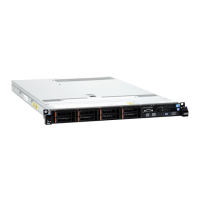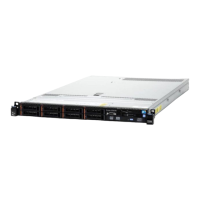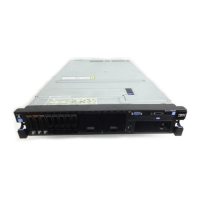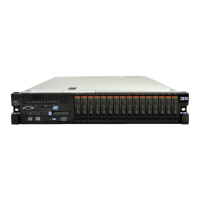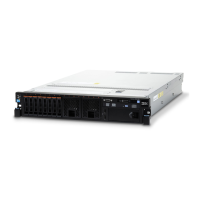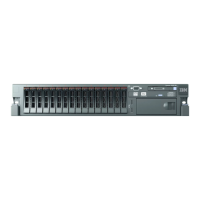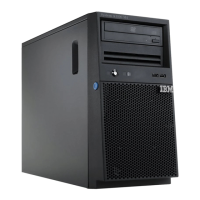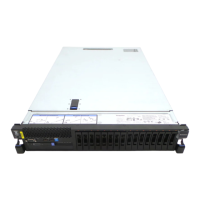v For intermittent problems, check the event log; see “Event logs” on page 115 and
“DSA messages” on page 193.
Performing the checkout procedure
To perform the checkout procedure, complete the following steps:
1. Is the server part of a cluster?
v No: Go to step 2.
v Yes: Shut down all failing servers that are related to the cluster. Go to step 2.
2. Complete the following steps:
a. Check the power supply LEDs (see “Power-supply LEDs” on page 114).
b. Turn off the server and all external devices.
c. Check all internal and external devices for compatibility at
http://www.ibm.com/systems/info/x86servers/serverproven/compat/us/.
d. Check all cables and power cords.
e. Set all display controls to the middle positions.
f. Turn on all external devices.
g. Turn on the server. If the server does not start, see “Troubleshooting by
symptom” on page 241.
h. Check the system-error LED on the operator information panel. If it is
flashing, check the light path diagnostics LEDs (see “Light path diagnostics”
on page 106).
Note: When you slide the light path diagnostics panel out of the server to
check the LEDs or checkpoint codes, do not run the server continuously
with light path diagnostics panel outside of the server. The panel should
only be outside of the server a short time. The light path diagnostics panel
must remain in the server when the server is running to ensure proper
cooling.
i. Check for the following results:
v Successful completion of POST (see “POST” on page 118 for more
information)
v Successful completion of startup, which is indicated by a readable display
of the operating-system desktop
3. Is there a readable image on the monitor screen?
v No: Find the failure symptom in “Troubleshooting by symptom” on page
241; if necessary, see “Solving undetermined problems” on page 259.
v Yes: Run DSA (see “Running the DSA Preboot diagnostic programs” on page
120).
– If DSA reports an error, follow the instructions in “DSA messages” on
page 193.
– If DSA does not report an error but you still suspect a problem, see
“Solving undetermined problems” on page 259.
Chapter 4. Troubleshooting 103
